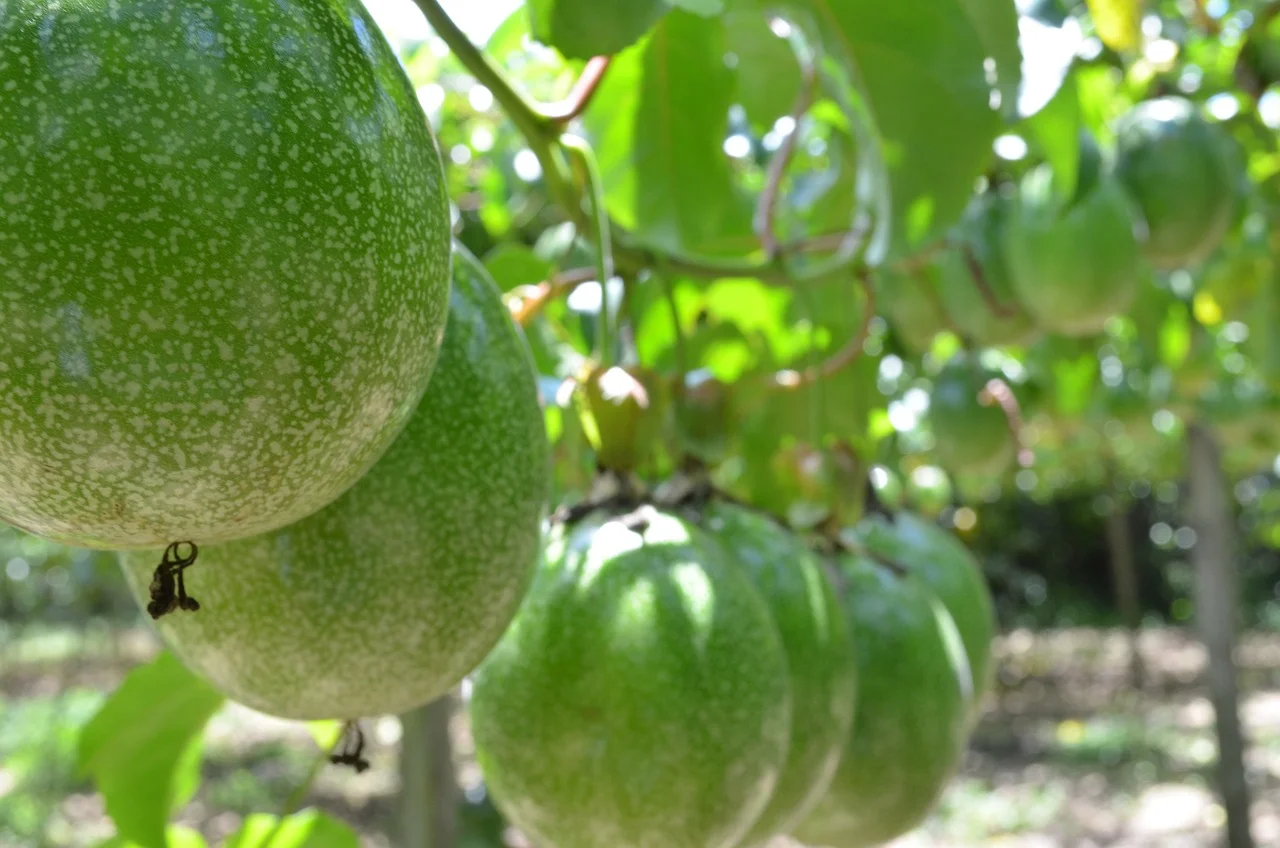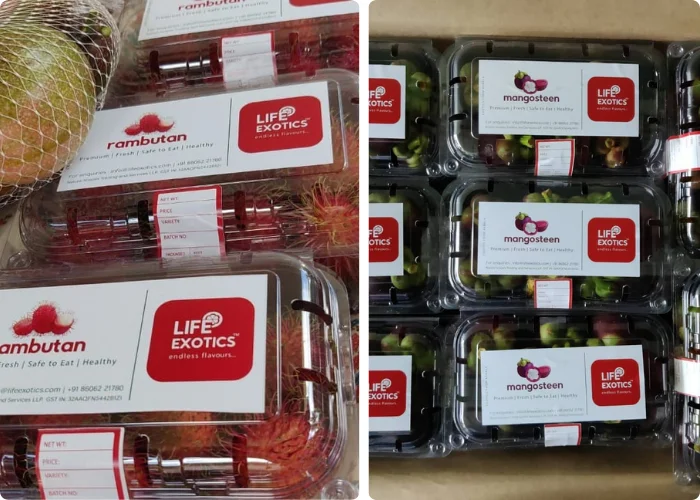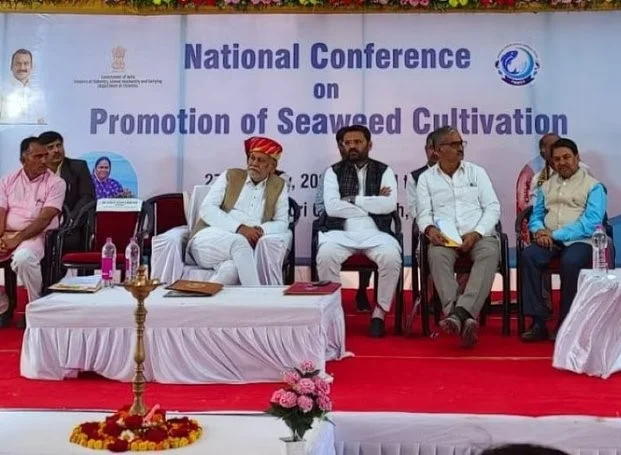After completing his postgraduate studies in electrical engineering at the University of Texas and spending six years working in the United States, Varkey George found an opportunity to return to India and pursue a career in farming. Growing up in a family deeply connected to agriculture, Varkey spent his early years on the family farm in Kootickkal, Kerala. While employed at Texas Instruments in the US, his family acquired land in Kombai, Theni, Tamil Nadu.
Facing a tough decision between continuing his life in the US or returning to India, Varkey reflects, “I was torn between staying in the US or moving back to India. Ultimately, in 2011, I decided to take the leap, and ever since, I’ve been overseeing the management of this 170-acre farm.”
In the past decade in Tamil Nadu, traditional crops such as vegetables and coconuts faced challenges with prices remaining stagnant, while input and labor costs continued to rise. Acknowledging the limitations of this unsustainable model, Varkey decided to explore exotic fruit cultivation on his land in Kombai, Theni.

Reflecting on his experience, Varkey shares, “After more than ten years of farming, I’ve come to realize that I might have underestimated the amount of effort required in agriculture.”
Also Read: Kerala couple builds an Eco-Friendly Mud House and Food Forest
Varkey explains the difference between engineering and agriculture, highlighting, “In engineering, mistakes can be fixed swiftly, and the learning happens rapidly. However, agriculture poses a unique challenge. The risks are significant, and when a mistake occurs, the correction is often delayed until the following year, adding to the complexity of the process.”
Transition to cultivating exotic fruits
Varkey points out that the prices of coconuts, cultivated on approximately 15 acres, have been stuck at around Rs 10 for the past decade. A similar situation arises with vegetables, where the average price per kilogram can range from Rs 12 to Rs 35. Faced with a 10 percent increase in production and labor costs, Varkey felt the need to explore innovative solutions.

“I considered growing high-value crops. About six years ago, a few friends and I, who are also farmers in Kerala, initiated some pilot projects. Some planted tropical fruits like rambutan, and others experimented with mangosteen, and the outcomes were quite impressive.”
Presently, on his farm in Kombai, Varkey is cultivating a variety of exotic fruits. He grows longans on three acres, Meyer lemons and grapefruit on seven acres, and passion fruit on six acres. Additionally, he has initiated a pilot project by planting 30 avocado plants.
Varkey cultivates exotic fruits alongside traditional crops like coconut, mangoes, chickoo, pomegranate, and vegetables. This mix ensures a diverse range of micronutrients, enhancing soil fertility.

Exotic fruits such as mangosteen, passion fruit, dragon fruit, figs, and others are gaining popularity in India. Many farmers, including Varkey, are adopting their cultivation based on local climatic conditions.
As of 2021-2022, the Ministry of Agriculture & Farmers Welfare reports that 28 lakh hectares are dedicated to exotic fruit cultivation. Madhya Pradesh leads with 11.35 lakh hectares, producing 12 million metric tonnes of fruits. Maharashtra follows closely with 11.20 lakh hectares and an output of about 11 million metric tonnes.
Varkey notes that exotic fruit cultivation in India is still in its early stages. To determine the most effective farming methods for the local climate, he combines internet resources with traditional knowledge.
He emphasizes, “A crucial aspect of our approach is the sapling selection. We believe that a good start is halfway to success.”

Selecting the right nursery is key, and Varkey adds, “We get our saplings from Homegrown in Kanjarapally, Kerala, as they consistently provide the best quality. Sapling prices range from Rs 300 to Rs 600. This careful selection is crucial to avoid potential time and money wastage over three to four years.”
“We pay close attention to the technical aspects of cultivation. Every fruit has its unique nutritional and water needs. Harvesting patterns also differ; for example, longans have a brief harvest period of one to two weeks, unlike citrus fruits that show a gradual peak followed by a gradual decline. It’s essential to manage all these factors,” Varkey explains.
Yield and revenues
Varkey dedicates six acres to growing passion fruit. Although native to Brazil, passion fruit is now cultivated in India, particularly in Himachal Pradesh, the North East, and the Western Ghats. Recounting his experience, Varkey mentions, “We’ve been harvesting passion fruits for the past two years. Last year, we yielded around 30 tonnes (30,000 kg), averaging about five tonnes per acre. The selling price ranged from Rs 75 to Rs 85 per kg.”
With this rate, passion fruit cultivation generates an income of Rs 4.25 lakh per acre.
Varkey also sells avocados at Rs 300 to Rs 400 per kg. He anticipates the first harvest of longans, a tropical fruit similar to lychee, this month (January), while the initial grapefruit harvest is expected in June 2024. “We aim to sell longans and grapefruit for Rs 330 per kg,” he adds.
This marks the inaugural year of cultivating Meyer lemons, and they are fetching a retail price of Rs 330-Rs 350 per kg. Varkey enthusiastically notes, “The returns from growing exotic fruits are three to four times greater compared to traditional crops.”
Approach to farming
An essential factor in cultivating exotic fruits is carefully analyzing the soil conditions. Varkey conducts soil tests to evaluate nutrient levels, addressing any deficiencies, as optimal plant growth depends on providing the right nutrients.
Another critical aspect is proper watering. Excessive water can harm the roots and lead to fungal diseases, negatively impacting fruit development. Varkey advises, “Irrigation needs vary daily, depending on climate and the transpiration process. To ensure accuracy, we use tensiometers at the surface level (6 inches) and the root zone (12 inches). This helps us plan irrigation to maintain an optimal moisture level.”

Varkey adds, “Tensiometers don’t need to be placed for each plant; instead, strategically locating them in representative areas across the entire cultivated land ensures efficient water usage.”
The flavor of the fruits plays a crucial role in determining their quality. To assess sweetness, Varkey uses a Brix refractometer.
“By extracting the fruit’s flesh and putting a few drops on the meter, we can measure the sweetness level. Each fruit variety has a specific optimal range. For example, export-grade grapes may have a Brix value of 17, while logans typically fall between 20-25 Brix,” he explains.
The timing of the harvest is determined by these sweetness measurements to ensure that the fruits are perfectly sweet and ripe.
“Although our farm doesn’t have official GAP certification, we follow Good Agricultural Practices (GAP) in our farming techniques. We carefully use fertilizers and incorporate farmyard manure when necessary,” he mentions.
Marketing of exotic fruits
Varkey suggests that farmers should take charge of packaging their fruits for direct sale to supermarkets or wholesalers. He believes, “It’s the most beneficial approach. This method minimizes market fluctuations and allows farmers to get better prices.”
He goes on to explain, “There are about five to six other farmers like me in Kerala growing various fruits like rambutan, litchi, mangosteen, etc. Our collective products are branded as ‘Life Exotics’ and are supplied to supermarkets or wholesalers. This diversification ensures a consistent supply throughout the year as the seasons vary. Our produce is primarily sold in Kochi, followed by Mumbai and Delhi.”









